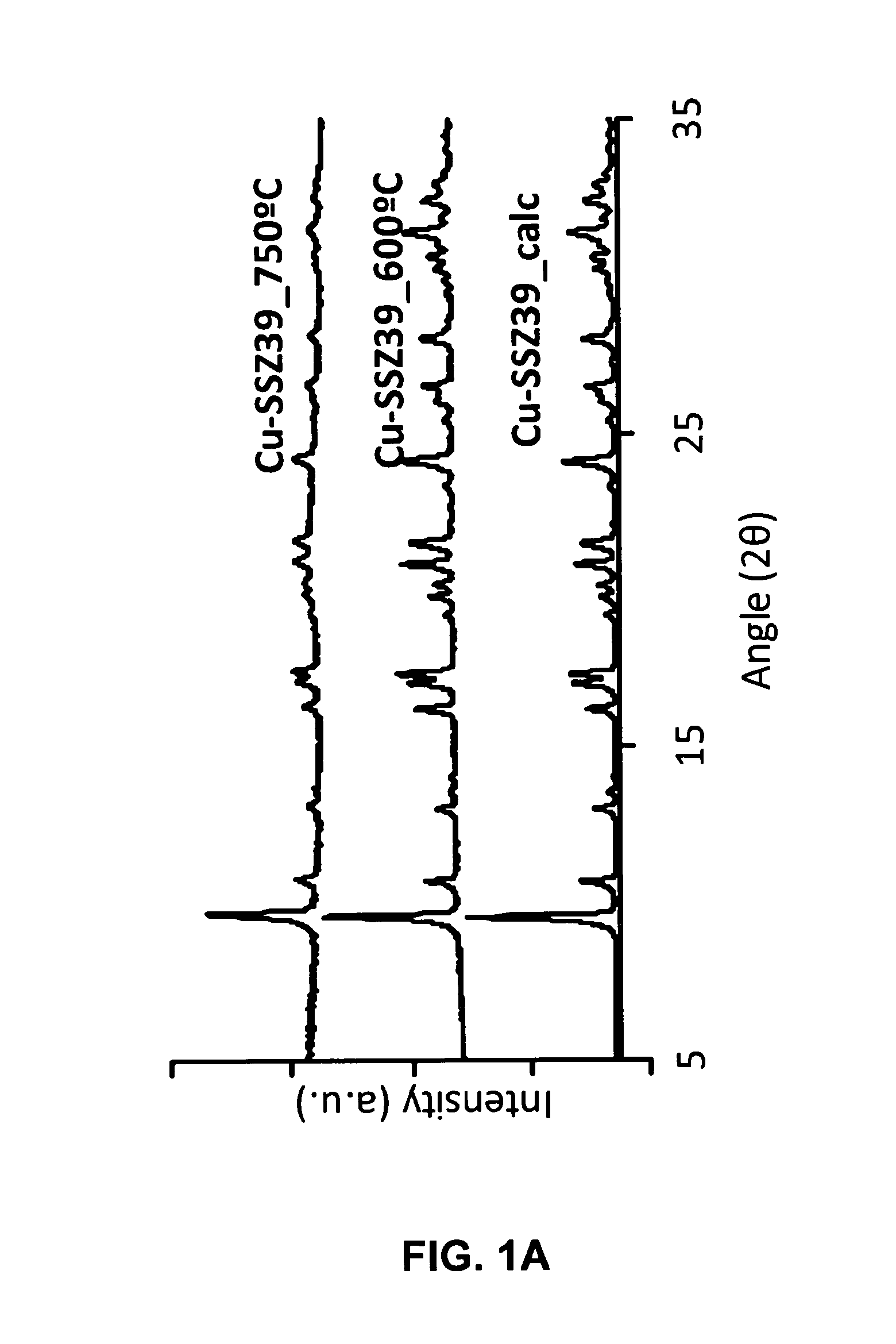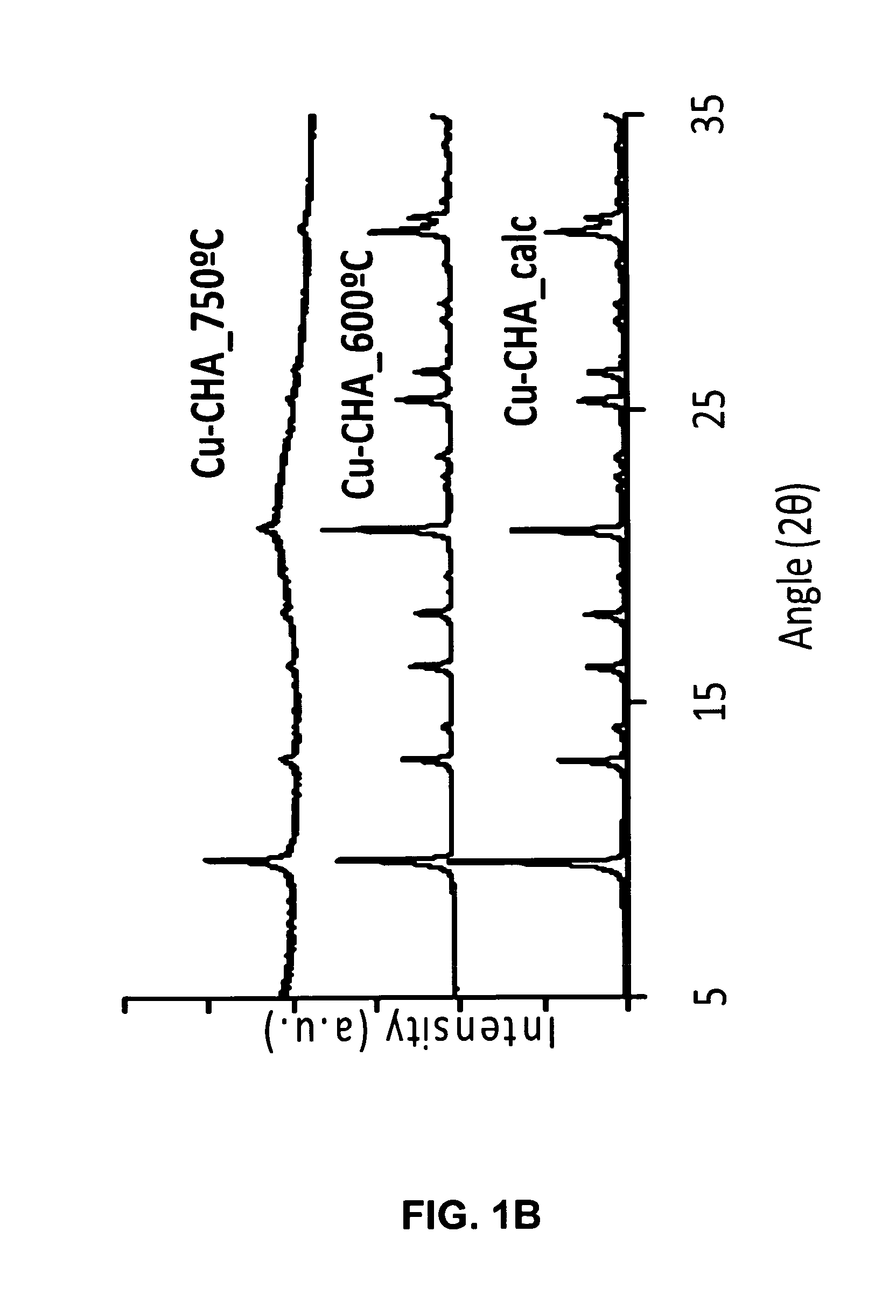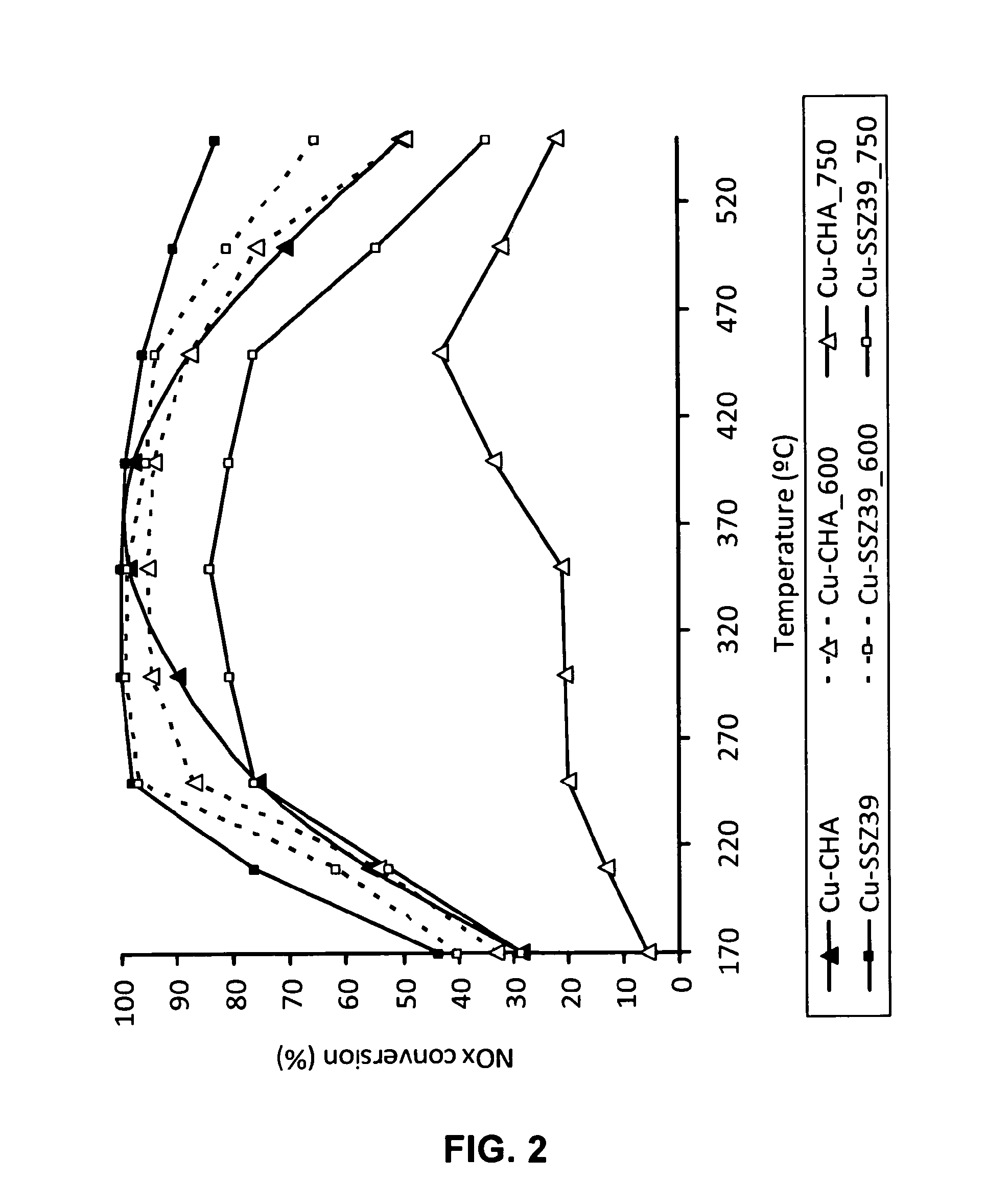Method and system for the purification of exhaust gas from an internal combustion engine
a technology of exhaust gas and internal combustion engine, which is applied in the direction of physical/chemical process catalysts, metal/metal-oxide/metal-hydroxide catalysts, and separation processes. it can solve the problems of deteriorating the performance of zeolite catalysts, catalysts that are exposed to high temperature excursions, and the disadvantage of forming particulate matter and nitrogen oxides, etc., to achieve the effect of increasing the temperature of exhaust gas
- Summary
- Abstract
- Description
- Claims
- Application Information
AI Technical Summary
Benefits of technology
Problems solved by technology
Method used
Image
Examples
example 1
Cu-SSZ-39 Catalyst Preparation
[0041]The zeolite SSZ-39 with the framework type code AEI was synthesized in a similar way as given in U.S. Pat. No. 5,958,370 using 1,1,3,5-tetramethylpiperidinium as the organic template. A gel with the following composition: 30 Si:1.0 Al:0.51 NaOH:5.1 OSDA:600 H2O, was autoclaved at 135° C. for 7 days, the product filtered, washed with water, dried and calcined in air. The final SSZ-39 had a Si / Al=9.1 measured by ICP-AES.
[0042]To obtain the Cu-SSZ-39 the calcined zeolite was ion exchanged with Cu(CH3COO)2 to obtain the final catalyst with a Cu / Al=0.52 after calcination.
[0043]The powder X-ray diffraction (PXRD) pattern of Cu-SSZ-39 after calcination is shown in FIG. 1.
example 2
Catalytic Testing
[0044]The activity of the samples for the selective catalytic reduction of NOx was tested in a fixed bed reactor to simulate an engine exhaust stream using a total flow rate of 300 mL / min consisting of 500 ppm NO, 533 ppm NH3, 7% O2, 5% H2O in N2 in which 40 mg catalyst was tested.
[0045]The NOx present in the outlet gases from the reactor were analyzed continuously and the conversion is shown in FIG. 2.
example 3
Test of Hydrothermal Durability
[0046]In order to test the hydrothermal stability of the zeolites, steaming treatments were done to the samples. They were exposed to a water feed (2.2 mL / min) at 600 or 750° C. during 13 hours in a conventional oven and afterwards tested similarly to Example 2.
[0047]The catalytic results can also be seen in FIG. 2. The samples that underwent a hydrothermal treatment have been marked with 600 or 700° C., depending on the temperature used during the hydrothermal treatment.
[0048]Additional characterization has also been performed to all treated samples. PXRD patterns after hydrothermal treatments are shown in FIG. 1, and BET surface areas, micropore areas, and micropore volumes of treated samples are summarized in Table 1 below.
PUM
| Property | Measurement | Unit |
|---|---|---|
| temperature | aaaaa | aaaaa |
| temperature | aaaaa | aaaaa |
| exhaust gas temperature | aaaaa | aaaaa |
Abstract
Description
Claims
Application Information
 Login to View More
Login to View More - R&D
- Intellectual Property
- Life Sciences
- Materials
- Tech Scout
- Unparalleled Data Quality
- Higher Quality Content
- 60% Fewer Hallucinations
Browse by: Latest US Patents, China's latest patents, Technical Efficacy Thesaurus, Application Domain, Technology Topic, Popular Technical Reports.
© 2025 PatSnap. All rights reserved.Legal|Privacy policy|Modern Slavery Act Transparency Statement|Sitemap|About US| Contact US: help@patsnap.com



